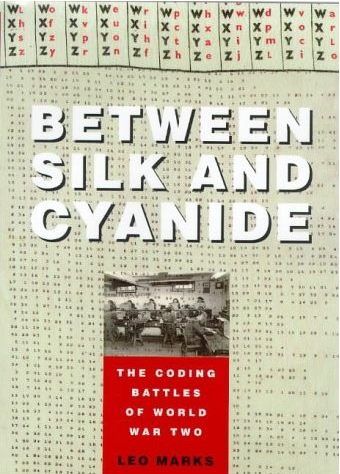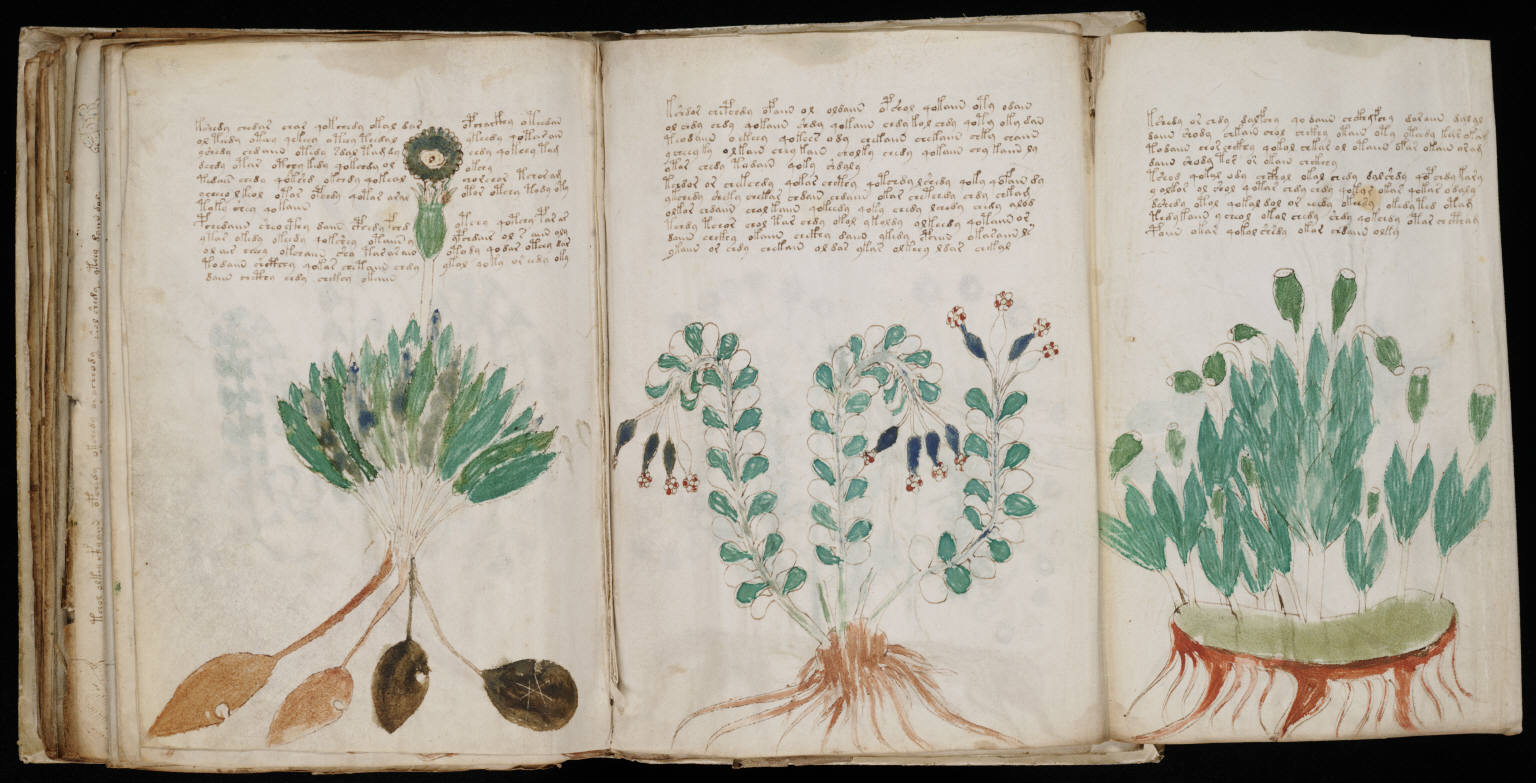Leo Marks: Between Silk and Cyanide (1998)
Filed under book | Tags: · 1940s, biography, cryptography, memoir, poetry, war

Background image on the cover is a ‘Worked Out Key’ (WOK) printed on silk; photograph shows FANY radio operators receiving morse code transmissions from secret agents.
“In 1942, Leo Marks left his father’s famous bookshop, 84 Charing Cross Road, and went off to fight the war. He was twenty-two. Soon recognized as a cryptographer of genius, he became head of communications at the Special Operations Executive (SOE), where he revolutionized the codemaking techniques of the Allies and trained some of the most famous agents dropped into occupied Europe, including “the White Rabbit” and Violette Szabo. As a top codemaker, Marks had a unique perspective on one of the most fascinating and little-known aspects of the Second World War.
Writing with the narrative flair and vivid characterization of his screenplays, Marks gives free rein to his keen sense of the absurd and his wry wit, resulting in a thrilling and poignant memoir that celebrates individual courage and endeavor, without losing sight of the human cost and horror of war.
In an interview with Channel Four included in the DVD of the film Peeping Tom, Marks quoted General Eisenhower as saying that his group’s work shortened the war by three months, saving countless lives.”
Publisher Free Press, New York, 1998
ISBN 0743200896
416 pages
Voynich Manuscript (early 1500s)
Filed under book | Tags: · astrology, astronomy, biology, botany, cryptography, language, medicine

“Written in Central Europe at the end of the 15th or during the 16th century, the origin, language, and date of the Voynich Manuscript—named after the Polish-American antiquarian bookseller, Wilfrid M. Voynich, who acquired it in 1912—are still being debated as vigorously as its puzzling drawings and undeciphered text. Described as a magical or scientific text, nearly every page contains botanical, figurative, and scientific drawings of a provincial but lively character, drawn in ink with vibrant washes in various shades of green, brown, yellow, blue, and red.
Based on the subject matter of the drawings, the contents of the manuscript falls into six sections: 1) botanicals containing drawings of 113 unidentified plant species; 2) astronomical and astrological drawings including astral charts with radiating circles, suns and moons, Zodiac symbols such as fish (Pisces), a bull (Taurus), and an archer (Sagittarius), nude females emerging from pipes or chimneys, and courtly figures; 3) a biological section containing a myriad of drawings of miniature female nudes, most with swelled abdomens, immersed or wading in fluids and oddly interacting with interconnecting tubes and capsules; 4) an elaborate array of nine cosmological medallions, many drawn across several folded folios and depicting possible geographical forms; 5) pharmaceutical drawings of over 100 different species of medicinal herbs and roots portrayed with jars or vessels in red, blue, or green, and 6) continuous pages of text, possibly recipes, with star-like flowers marking each entry in the margins.” (source)
240 pages
via Archive.org
PDF
Detailed chemical analysis of the Voynich Manuscript (from the Beinecke Rare Book & Manuscript Library)
Nick Land: Fanged Noumena: Collected Writings 1987-2007 (2011)
Filed under book | Tags: · biology, capitalism, cryptography, geophysics, nihilism, occultism, philosophy

“Fanged Noumena brings together the writings of Nick Land for the first time. During the 1990s Land’s unique philosophical work, variously described as ‘rabid nihilism’, ‘mad black deleuzianism’ and ‘cybergothic’, developed perhaps the only rigorous and culturally-engaged escape route out of the malaise of ‘continental philosophy’ – a route which was implacably blocked by the academy. However, Land’s work has continued to exert an influence, both through the British ‘speculative realist’ philosophers who studied with him, and through the many cultural producers – artists, musicians, filmmakers, bloggers – who have been invigorated by his uncompromising and abrasive philosophical vision.
Beginning with Land’s early radical rereadings of Heidegger, Nietzsche, Kant and Bataille, the volume then collects together the papers, talks and articles of the mid-90s – long the subject of rumour and vague legend (including some work which has never previously appeared in print) – in which Land developed his futuristic theory-fiction of cybercapitalism gone amok; and ends with his enigmatic later writings in which Ballardian fictions, poetics, cryptography, anthropology, grammatology and the occult are smeared into unrecognisable hybrids.
Fanged Noumena allows a dizzying perspective on the entire trajectory of this provocative and influential thinker’s work, and will introduce his unique voice to a new generation of readers.”
Edited by Robin Mackay, Ray Brassier
Publisher Urbanomic, Falmouth/UK; with Sequence Press, New York, 2011
Second edition, 2012
ISBN 095530878X, 9780955308789
667 pages
Review: Mark Fisher.
PDF (removed on 2013-3-13 upon request of the publisher)
Comment (0)
